During World War II, it became increasingly important to create artillery firing and aircraft bombing tables. Since there was so much technological change during the war, many new types of ammunition and devices for firing them came into existence. Each separate projectile-artillery piece combination required individual calculations for each possible trajectory.
Because of the enormous amount of data, it became impossible to calculate this information by any known means. On 5 June 1943, the US Army Ordnance Corps contracted with the University of Pennsylvania’s Moore School of Electrical Engineering for research and development of an electronic numerical integrator and computer. It was later known by its acronym, ENIAC. When developed, ENIAC, although extremely slow by today’s standards, was incredibly fast compared to the methods of that era.
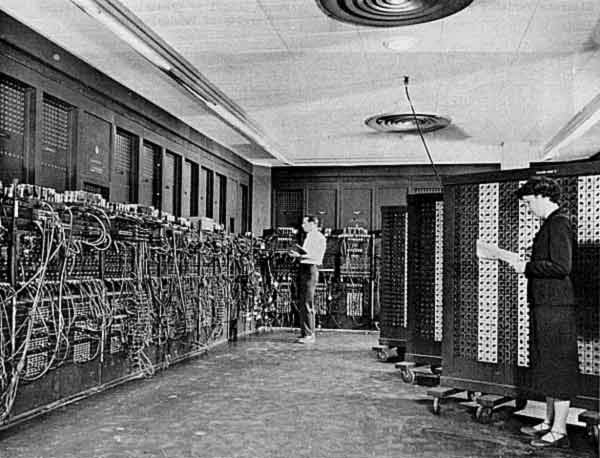
The Electronic Numerical Integrator and Computer, or ENIAC.
Photo: US Army.
National Archives and Records Administration.
Still Picture Branch. College Park, Maryland.
ENIAC could solve an equation in 30 seconds that took the Bush Differential Analyzer, another machine of the period, 15 minutes to solve. The same problem, calculating a 60-second trajectory for artillery, took a skilled mathematician using a slide rule about twenty hours to solve. This was the most common method used to work these problems before the ENIAC was completed. Although ENIAC seemed speedy when running, it had to be specially setup and manually wired for each program.
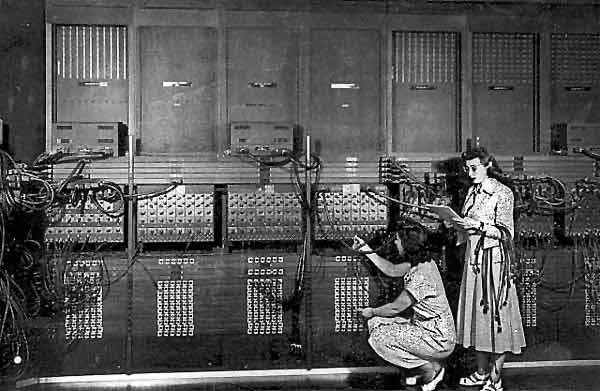
Two women wiring ENIAC to run a program.
Photo: US Army.
National Archives and Records Administration.
Still Picture Branch. College Park, Maryland.
The ENIAC was placed into operation gradually and the first components called the accumulator and cycling units were put into operation in 1944. Following this, components called the initiating and function table units were added in September 1945 and the divider and square root units were added that October.
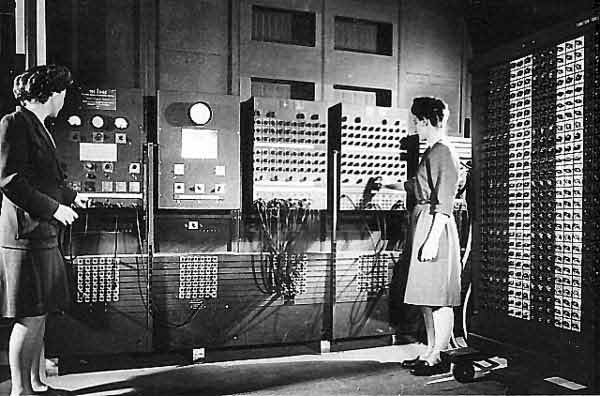
Two women operating ENIAC's main control panel while the machine was still located at the Moore School.
Left: Betty Jennings Right: Frances Bilas.
Photo: US Army.
National Archives and Records Administration.
Still Picture Branch. College Park, Maryland.
When the ENIAC was fully assembled, it had 40 separate panels in a U-shaped arrangement and it weighed more than 30 tons, or 27,000 kilos. It occupied 1,500 square feet, or 457 square meters, and it was 100 feet, or 30.5 meters, long 10 feet, or 3.05 meters, high and 3 feet, or .91 meters, deep. Despite its enormous physical size, it had no memory storage although it had 17,468 vacuum tubes of 16 different types, 15,000 relays, 6,000 switches, 70,000 resistors, and 10,000 capacitors.
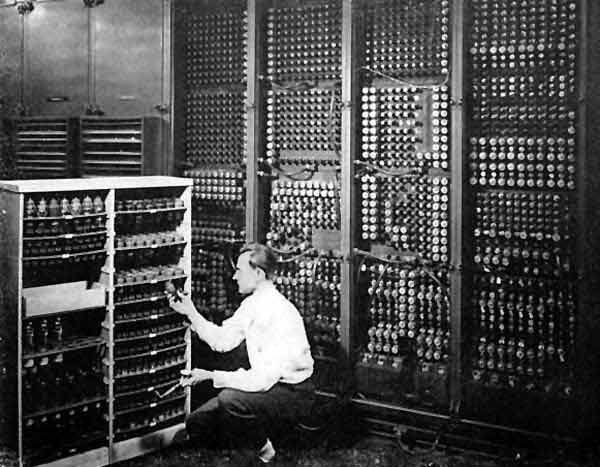
Replacing a bad tube meant checking among ENIAC's 17,468 possibilities.
Photo: US Army.
National Archives and Records Administration.
Still Picture Branch. College Park, Maryland.
President Harry S. Truman and Other Dignitaries Attend ENIAC’s DedicationENIAC was dedicated in February of 1946 and speedily solved many of the nation’s defense related calculations. From 1946 to 1952, ENIAC solved many complex scientific problems in weather prediction, atomic energy, cosmic ray studies, wind tunnel design and thermal ignition studies in addition to its use for ballistics.
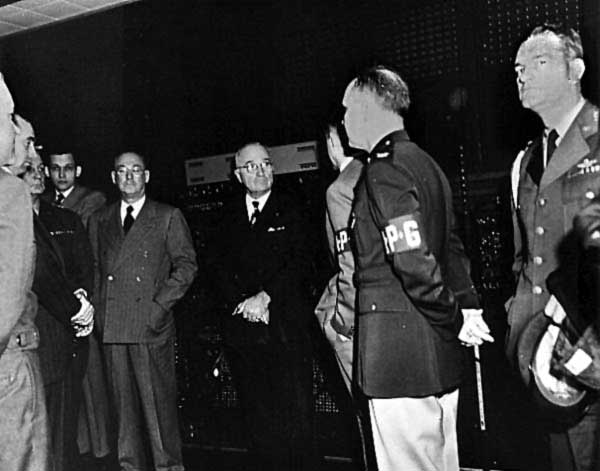
President Harry S. Truman and Other Dignitaries standing in front of the ENIAC at ENIAC’s Dedication.
Photo: US Army.
National Archives and Records Administration.
Still Picture Branch. College Park, Maryland.